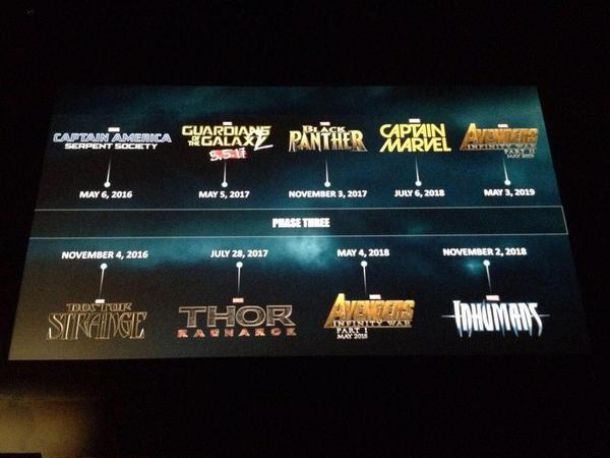
(PART I) December 28, 1895 the brothers Louis and Auguste Lumière made the first public projection of moving images. The Lumière had invented what for many was the factory of dreams, for them it was an “invention without any future”.
Shortly after the invention of the Lumière, documentary film began to expand; scenes of workers, laborers and fictional cinema were exhibited. These projections quickly attracted many spectators, which sparked the interest of German, American and English inventors to improve and refine what was devised by the French brothers. Before the end of the 19th century, many people in Europe and the United States had already seen some moving image.
Very soon, the cinema found an industrial vocation that was very profitable, but with little attention of the art world, becoming a low-cost fair show focused on the popular mass, the incipient film industry was finding a global roots and penetration, reflecting the cultural values and customs of each country. Little by little, the cinema had a universal scope, with local productions that expressed the spirit and language from each region.
During the first, but especially in the second World War, the film industry became the perfect vehicle to show society what was happening. Around the world, the cinema theaters showed the rise of dictators such as Hitler, Mussolini and Stalin, the drama of the war, and in a parallel way, audiovisual production companies began to develop content with directed interests and propaganda intentions.
The cinema began to turn, without even knowing it, in what the US later called “Soft Power”, using its platform to sell to the world “the American way”.
In the postwar era, and under a well thought out strategy, Mexican cinema received great support from the already firm Hollywood structure to promote the development of the film industry in that country. The Mexican film industry would begin its so-called “Golden Age” with great critical and box office successes and figures that transcended the national scene.
Mexican cinematography, under the US influence, followed "The Star System" promoting the "cult of the actor", developing from the studios the emergence of great stars turned into authentic national idols. México showed and exported around the world stories of ordinary people, with customs, traditions, and values, creating stereotypes with which the audience had a sense of belonging and easily identified.
Television arrived but paradoxically, this boost the filmmaking industry.
However, in the decade of the 50's all change, television arrived with force and to stay as one of the greatest social disruptors of the moment. What at first seemed a threat to the film industry, became the greatest benefactor and promoter of the film industry, which would distance itself from television to position as an art and high entertainment industry based on the generation of sophisticated content, with a great freedom of expression that little by little was deregulating and of which, the TV lacked.
In France began the so-called "Nouvelle vague" or "New Wave" pushed by a group of young French filmmakers who promoted technical freedom and expression, in Italy Neorealism was focused on exhibiting in a more authentic and humane way the social conditions that he was crossing that country.
Great directors emerged in Japan and Sweden who would impact and influence the entire industry. Akira Kurosawa was the creator of cinematographic techniques that continue to be used today, such as filming with two or three cameras, inspiring iconic directors of today like George Lucas and his famous Star Wars. While in Sweden, Ingmar Bergman began to approach human complexity as no other director had, focusing on profound human themes like passions, psychology, nostalgia, the duality of being, religion and the existence of God.
Meanwhile, in the United States the “Golden Age of Hollywood” was gaining momentum, mainly on western genres, comedy, film noir, musicals, animated films, and biographies. The business model followed by the production companies in that country was the so-called “Study System”. The major studios had on their payroll actors, producers, directors, writers, stuntmen, mechanics, and technicians, as well as hundreds of theaters in cities and towns around the United States that constantly needed to show new films and content. However, the centralization of the “Studio System” ended with the arrival of television and government intervention, which provoke a differentiating development in the creative approach of each studio (Paramount, MGM, Universal, Columbia, RKO and Twentieth- Century Fox, among others).
The New Hollywood brought great productions, creative shows, and visual and narrative innovations powered today's legendary directors and actors like Spielberg, Scorsese, Francis Ford Coppola, George Lucas, Brian de Palma, Marlon Brando, Al Pacino, Robert de Niro and more. Under this new era the global foundations were laid for an increasingly marked difference between today's well-known commercial cinema and independent cinema.
This trend of complex and expensive productions, artistic expressions, reflections of reality with little censorship, cultural visions portrayed by the big producers and exhibited in the most important film chains around the world once again suffered a paradigm shift that was not challenged since the emergence of television:
The Age of Streaming
Streaming, like television at the time, is here to stay, disrupting in a way never seen before in the generation and exposure of content. Unlike television, streaming does not have barriers, censorship limits, or even today, “intergovernmental or transnational” regulations on its content produced and exhibited between the different existing platforms. More in its favor, its business model represents the accessibility of this type of content for a large part of the world's population, at least to the ones that have internet access, access that the UN itself established as a basic right for all human beings in a document promulgated and called "Agenda 2030 for sustainable development" in 2015.
Through this scenario, the perfect breeding ground began to take shape in recent years so that today we can see a massive penetration of specialized and high-quality content, free of censorship and with huge production budgets. Netflix, Disney +, Amazon Prime, Apple TV, Facebook Watch, YouTube TV, not only know the impact they generate on societies and economies, but they will fight fiercely for a piece of the market between them and against those that are emerging as Paramount +, Sony Bravia Core and HBO Go, this last being the queen of large acquisitions with the high-profile purchase of AT&T from Time Warner for more than 85 billion dollars in October 2016, crystallizing 2 years later in one of the largest mergers in corporate history.
But the questions of this paradigm remain; where is this gigantic high-impact market headed? Will it be the game of "tech companies" against large and traditional production companies? Will exhibitors die? Will streaming content be regulated globally? How much censorship will this platform suffer beyond traditional, conservative and prohibitionist countries like China, Saudi Arabia, Russia, Iraq, North Core?
The answer is more complex and extensive than it seems, and to understand it, it was necessary to trace the beginnings of the film, entertainment, and content industry.
To begin, the exhibitors are not going to die, but they are going to have to adapt to the change that the film industry itself had to adapt when television broke in. They will have to specialize in offering the market such a sophisticated experience that you will not be able to live it at home, and at the same time, they will have to bring their infrastructure closer to the lowest class of the population that cannot even have access to the internet and on that model find their profitability so that in its offer, people of any socioeconomic stratum find in the theaters what they do not have at home. Auto cinemas and old ways of enticing the audience can come back strongly to offer fun and low-cost experiences.
Streaming producers will not have it easily either. Some companies will fall, like Quibi, an exclusive streaming system for phones, that is about to close after six months of unstable operations amid the COVID-19 pandemic, according to Wall Street Journal reports in October 2020. Other teams and divisions will be rescue, like Fox 2000, producer of over 50 films like “Fight Club”, “Life of Pi”, “Marley & Me”, “The Devil Wears Prada” among other many films critical and commercially successful was discarded by Disney but taken from the drift by Sony Pictures.
But the main battles will be fought on one hand, with the tech giants like Amazon, Apple, Google Tv, Facebook Watch and for the practical purposes of this essay Netflix as well, against the big and traditional production companies like Disney, Paramount, Warner Bros (AT&T and HBO Go) and Sony. And it is classified in this way, because despite all the technological and budgetary power that Amazon, Apple, Google, Facebook, and Netflix have, all three lack what Paramount, Sony, but especially Warner Bros and Disney have: Superheroes trademarks and legendary titles that generations with high purchasing power such as Baby Boomers, Generation X and Millennials will want to continue seeing on any screen, under any platform.
It is at this point where the future of this entire ecosystem takes a lot of depth and different dimensions. Since it is not only becoming a topic of who has the bigger budget, but also how it is directed to create an emotional connection with the different audiences that develop loyalty and consumer commitment to the content producer within a high level of competition.
The tech giant must be very clear that to gain ground they will have to “cluster” their audience, investing in native content and in key markets with high “transnational spread”. Therefore, they will have to invest in making “smart content”, to really have the sensitivity and understanding of the mood and consumption in a regional way so that their content creates connection, and on the other hand they will also have to create symbols (superheroes) and great titles that connect with their global audience and motivate them to generate an aspirational feeling for any generation. Disney, Warner, Sony, Paramount, have it very clear, not only do they bet on new and great productions through their new streaming platforms, but they also have a variety of symbols and great titles that are well rooted in any society in the world.
This will be the fight of a huge market unfold under strong creative strategies in the short, but especially in the medium and long term, based on initiatives from several verticals, not only justified by the strong budgets that each one injects into their companies.
Sources consulted:
- https://historia.nationalgeographic.com.es/a/hermanos-lumiere-y-nacimiento-cine_12264
- https://cinema23.com/blog/trayecto23/la-epoca-de-oro-del-cine-mexicano/
- http://imagen1tardefp.blogspot.com/2012/03/los-grandes-estudios-de-cine.html
- https://fahrenheitmagazine.com/arte/cine/la-influencia-de-akira-kurosawa-en-el-cine-mundial
- https://www.sensesofcinema.com/2002/great-directors/bergman/
- https://www.ibc.org/trends/whos-winning-the-streaming-war/6802.article





